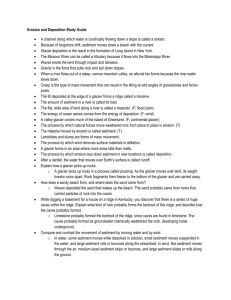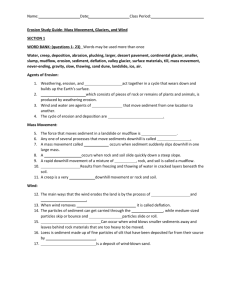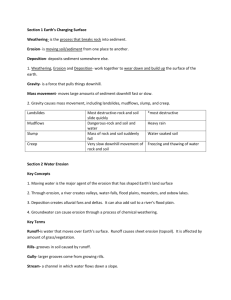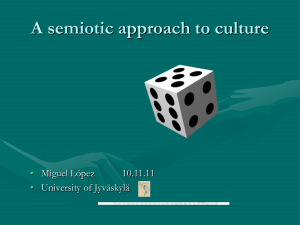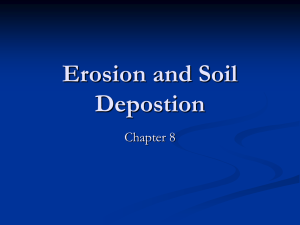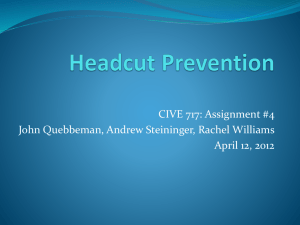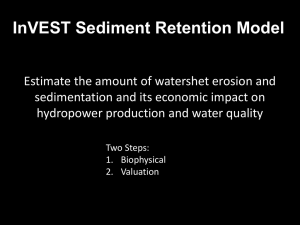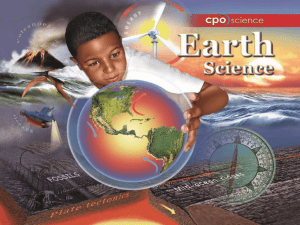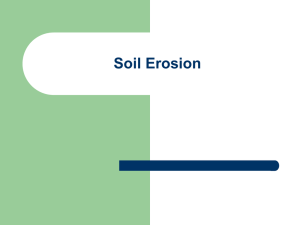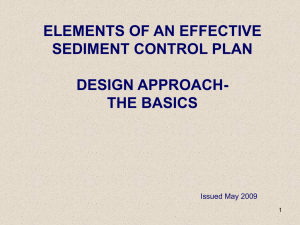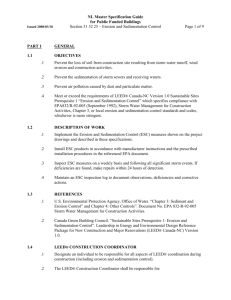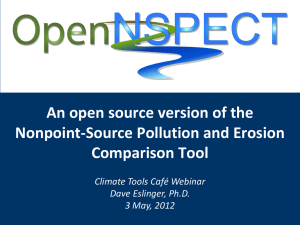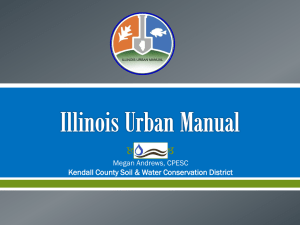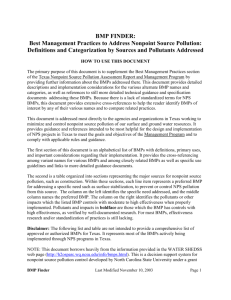What is Science
advertisement
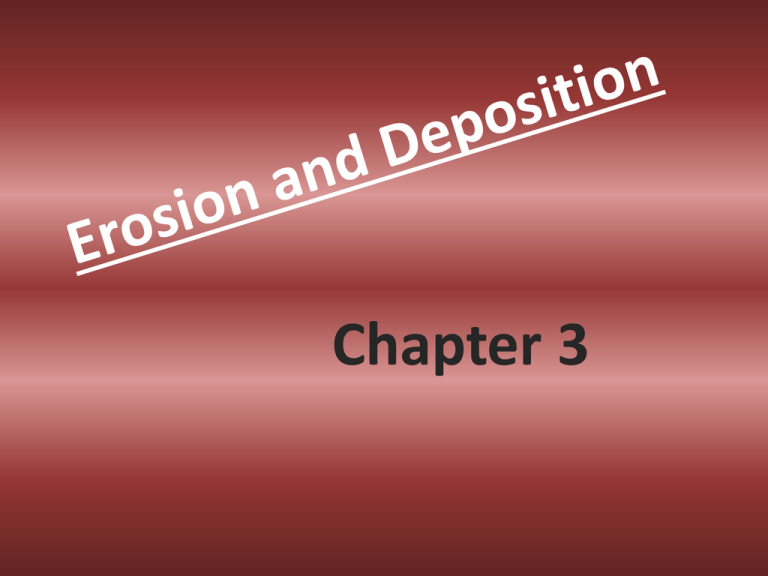
Chapter 3 Lesson 1 Erosion is the process by which natural forces move weathered rock and soil from one place to another. Mr. Parr: Weathering and Erosion (no facts) http://www.youtube.com/watc h?v=2311yO5opVk Earth materials consisting of small, solid pieces of material that come from rocks or the remains of organisms is called sediment. 3 types of rock- a science song (no facts) http://www.youtube.com/watch?v =jPgE74Vltdc Stormwater Strategies: Erosion & Sediment Control (3 facts) http://www.youtube.com/watc h?v=Kdm-Z-_AGnU Deposition is the process in which sediment is laid down in new locations. Gravity is the force that moves objects downward. Mass movement is any one of several processes by which gravity moves sediment downhill. You Tube: Outrunning a Landslide (2 facts) http://www.youtube.com/ watch?v=K1qY8nPqcCw YouTube: Mass Movement (2 facts) http://www.youtube.com/watch?v=hMlt-xcpNSo 12 facts so far Lesson 2 Runoff is water that flows over the ground surface carrying particles with it. As runoff travels, it forms tiny grooves in the soil called rills. A gully is a large groove, or channel, in the soil that carries runoff after a rainstorm. A stream is a channel along which water is continually flowing down a slope. A tributary is a stream or river that flows into a larger river. A flood plain is the flat, wide area of land along a river. What is Floodplains by Design? (3 facts) http://www.youtube.com/ watch?v=-PBT4OEJfGs A meander is a loop-like bend in the course of a river. An oxbow lake is a meander that has been cut off from the river. What is a meander? (3 facts) http://www.youtube.com /watch?v=STgbHFvUMlE A landform made of sediment that is deposited where a river flows into an ocean or lake is called a delta. An alluvial fan is a wide, sloping deposit of sediment formed where a stream leaves a mountain range. Groundwater is water that fills the cracks and spaces in underground soil and rock layers. A deposit that hangs like an icicle from the roof of a cave is known as a stalactite. A stalagmite is a columnlike form that grows upward from the floor of a cavern. Karst topography is a region in which a layer of limestone close to the surface creates deep valleys, caverns, and sinkholes. Demo of erosion by water (no facts) http://www.youtube.com/ watch?v=xzVBFkpD94E Water Erosion (2 facts) http://www.youtube.com/w atch?v=ofhQvAu_L1I Bill Nye: Erosion (5 facts) http://www.youtube.com/watc h?v=bkeYLm8-kPA 39 facts so far Lesson 3 A glacier is any large mass of ice that moves slowly over land. A continental glacier is a glacier that covers much of a continent or large island. Times in Earth’s history during which glaciers covered large parts of the surface are called ice ages. A valley glacier is a long, narrow glacier that forms when snow and ice build up high in a mountain valley. Plucking is the process by which a glacier picks up rocks as it flows over the land. The mixture of sediments that a glacier deposits directly on the surface is called till. A ridge formed by the till deposited at the edge of a glacier is a moraine. A kettle is a small depression that forms when a chunk of ice is left in glacial till. Good luck Update Update Update!!! Credits to Anjali and Emily Lesson 4 A headland is a part of the shore that sticks out into the ocean. A beach is an area of wave-washed sediment along a coast. Longshore drift is the movement of water and sediment down a beach caused by waves coming in to shore at an angle. A spit is a beach that projects like a finger out into the water. Lesson 5 Deflation is the process by which wind removes surface materials. A sand dune is a deposit of windblown sand. Loess is a wind-formed deposit made of fine particles of clay and silt.


